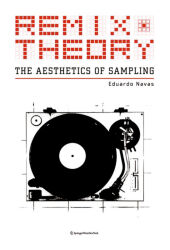 Neuerscheinungen 2012Stand: 2020-01-07 |
Schnellsuche
ISBN/Stichwort/Autor
|
Herderstraße 10
10625 Berlin
Tel.: 030 315 714 16
Fax 030 315 714 14
info@buchspektrum.de |

Eduardo Navas
Remix Theory
The Aesthetics of Sampling
2012. XII, 180 S. w. 50 b&w ill. 242 mm
Verlag/Jahr: AMBRA 2012
ISBN: 3-7091-1262-1 (3709112621) / 3-9904349-9-3 (3990434993)
Neue ISBN: 978-3-7091-1262-5 (9783709112625) / 978-3-9904349-9-4 (9783990434994)
Preis und Lieferzeit: Bitte klicken
Remix Theory: The Aesthetics of Sampling is an analysis of Remix in art, music, and new media. Navas argues that Remix, as a form of discourse, affects culture in ways that go beyond the basic recombination of material. His investigation locates the roots of Remix in early forms of mechanical reproduction, in seven stages, beginning in the nineteenth century with the development of the photo camera and the phonograph, leading to contemporary remix culture. This book places particular emphasis on the rise of Remix in music during the 1970s and ´80s in relation to art and media at the beginning of the twenty-first Century. Navas argues that Remix is a type of binder, a cultural glue-a virus-that informs and supports contemporary culture.
Sampling and remixing are now common in art, music and new media. Assessing their aesthetic qualities by focusing on technical advances in 1970s and 80s music, and later in art and media, the author argues that Remix punches above its deemed cultural weight.
Remix Theory: The Aesthetics of Sampling is an analysis of Remix in art, music, and new media. Navas argues that Remix, as a form of discourse, affects culture in ways that go beyond the basic recombination of material. His investigation locates the roots of Remix in early forms of mechanical reproduction, in seven stages, beginning in the nineteenth century with the development of the photo camera and the phonograph, leading to contemporary remix culture. This book places particular emphasis on the rise of Remix in music during the 1970s and 80s in relation to art and media at the beginning of the twenty-first Century. Navas argues that Remix is a type of binder, a cultural glue a virus that informs and supports contemporary culture.
Acknowledgements. - Preface. - Introduction: Remix and Noise. - Remix(ing) Sampling. - Remix(ing) Music. - Remix(ing) Theory. - Remix(ing) Art. - Conclusion: Noise and Remix. - Index.


